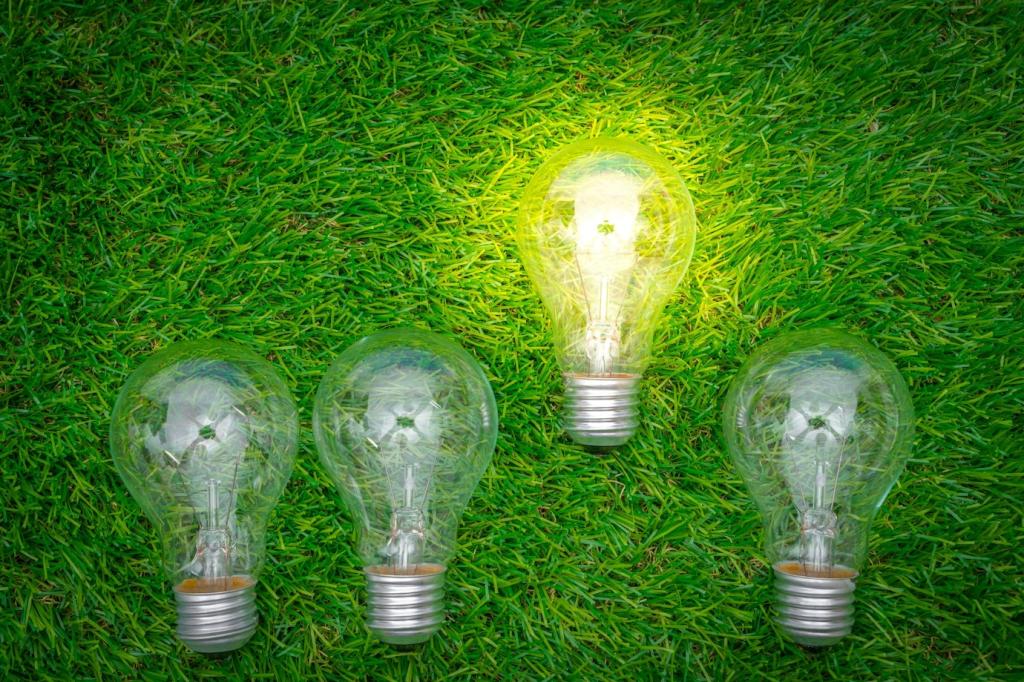
Energy-Efficient Solutions for Tomorrow's Automated Homes
Discover how the latest advancements in smart home technology are shaping a more sustainable future for homeowners around the globe. As automation becomes an integral part of modern residences, energy efficiency remains at the forefront of innovation, helping to reduce costs, conserve natural resources, and create more comfortable living environments. Explore the transformative potential of energy-efficient solutions designed specifically for tomorrow’s automated homes, and learn how these new technologies are paving the way for greener, smarter living.
Smart Climate Control Systems
01
Adaptive Thermostats
Adaptive thermostats use algorithms that learn from your routine, adjusting heating and cooling schedules automatically for your maximum comfort and minimum energy use. These smart devices consider factors like time of day, occupancy patterns, and even local weather forecasts to fine-tune your home’s internal climate. Over time, they create customized programs that cut down on unnecessary usage, which can lead to significant reductions in overall energy bills. In addition, most adaptive thermostats come with intuitive mobile apps, letting homeowners tweak settings from anywhere, further improving convenience and control.
02
Intelligent Ventilation
Intelligent ventilation systems use a network of sensors to monitor air quality, temperature, humidity, and occupancy in real time. By adjusting airflow dynamically, they ensure optimal indoor environments without wasting energy on rooms that are unoccupied or already have ideal conditions. These automated systems can be integrated with windows and fans, orchestrating complex routines that naturally refresh the air while minimizing reliance on HVAC systems. The result is not only better air quality and comfort but also measurable reductions in energy spending, making intelligent ventilation a critical part of tomorrow’s efficient homes.
03
Connected Zoning
Modern climate control solutions include connected zoning, which divides a home into distinct areas that can be managed independently. Residents can specify different temperatures or schedules for each zone, ensuring energy is not wasted heating or cooling spaces that aren’t in use. Connected zoning relies on smart dampers and wireless controls to respond in real-time to room-by-room occupancy and preferences. This fine-grained management leads to better comfort as well as substantial savings on both energy and costs over time, cementing its place as a must-have for efficient automated homes.
Efficient Lighting Automation

Motion-activated lighting takes the guesswork out of turning lights on and off, relying solely on real-time activity in each area of the home. These systems activate illumination instantly when someone enters a room and switch it off when the space is vacated, decisively preventing energy waste. Ideal for high-traffic zones such as hallways, bathrooms, and kitchens, motion-activated lighting also enhances safety by eliminating dark passageways. The latest generation of sensors can even adjust brightness based on ambient light, ensuring optimal visibility while minimizing electrical usage.
Advanced Appliance Management
01
Smart scheduling tools empower homeowners to run appliances at the most energy-efficient times, typically during off-peak hours when electricity rates are lower or demand on the grid is reduced. Automated routines can delay the start of washing machines or dishwashers until night-time, or schedule electric vehicle charging when renewable energy supply is high. This approach not only saves money for homeowners but also helps stabilize the wider energy grid, supporting a more sustainable and balanced use of available power resources.
02
Advanced usage monitoring systems track the real-time energy consumption of all connected appliances, offering insightful reports and customizable alerts. If an appliance is left running longer than necessary or operating inefficiently, homeowners receive instant notifications and recommendations for corrective action. These systems can identify energy-hungry devices, suggest optimal usage patterns, or even automate shut-off commands when thresholds are exceeded. By making energy use visible and actionable, monitoring and alerts promote conscious, responsible, and efficient consumption throughout the home.
03
Demand-response integration connects your home appliances and systems with utility providers, allowing for dynamic adjustment of energy use based on grid conditions. When energy demand spikes or supply is constrained, participating appliances can shift to low-power mode, reschedule operations, or temporarily power down—often in exchange for rebates or other incentives. This automated coordination reduces strain on the energy infrastructure while helping homeowners save on electricity costs. Demand-response programs represent a crucial collaboration between smart homes and the broader energy ecosystem, paving the way for a more resilient and efficient future.
